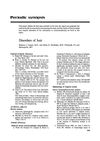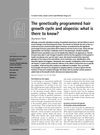The Growth of Human Hair in Nude Mice
October 1996
in “
Dermatologic clinics
”
TLDR Adiponectin reduces inflammation and bone loss in joint replacements.
The study demonstrated that grafting human scalp onto nude mice was a viable method for investigating hair follicle physiology and pathology. The success rate of graft take improved from 30% to nearly 50% over 5 years. Human fetal skin grafts showed an 80% success rate in developing hair follicles. The model was used to study genetic hair defects and androgen-dependent alopecia, revealing that topically applied antiandrogens increased hair production in balding scalp grafts on testosterone-conditioned nude mice.




